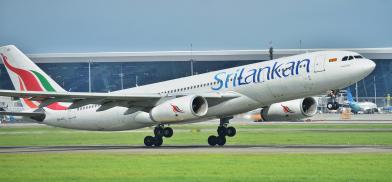Sri Lankan capital's Ratmalana Airport to resume international flights, will boost regional connectivity
Giving a boost to regional connectivity, particularly with the Maldives and India, Colombo's Ratmalana Airport is set to launch international flights after five decades and the first flight is scheduled to depart for the Maldives next month

Giving a boost to regional connectivity, particularly with the Maldives and India, Colombo's Ratmalana Airport is set to launch international flights after five decades and the first flight is scheduled to depart for the Maldives next month. The decision to resume international flights from Ratmalana, which is now used primarily as a domestic airport serving the Sri Lankan capital, was taken after lengthy discussions with Maldivian, the national airline of the Maldives.
Maldives, with 1,192 islands spread over roughly 90,000 square km, already has 15 airports, including five international airports.
Sri Lanka’s tourism ministry said Ratmalana, the country’s first and only international airport till the opening of the Bandaranaike International Airport, Katunayake in 1967, would be developed as a regional international airport centered on India and the Maldives. The tourism ministry said it was planning to launch new regional international flights using the resources available at the Ratmalana Airport.
The ministry said the government has recently taken steps to withdraw aircraft parking and parking charges for one year for the promotion of international flights at Ratmalana Airport besides suspending the airport service tax levied on passengers for one year.
The development comes close on the heels of India commencing the Greater Male Connectivity Project (GMCP) -- the largest-ever infrastructure project -- in the Maldives. Under the project, India will grant USD 100 million besides a line of credit worth Rs 400 million.
The countries of South Asia have increasingly recognized the importance of regional transport connectivity in boosting their competitiveness and accelerating economic growth. At the 16th Summit of South Asia Association for Regional Cooperation (SAARC) in Thimphu, Bhutan in 2010, member countries1 declared 2010-2020 as the Decade of Intra-regional Connectivity in SAARC‖.
The SAARC Regional Multimodal Transport Strategy Study, which Asian Development Bank had helped formulate, provides a framework for regional connectivity in South Asia.
The Bay of Bengal Initiative for Multisectoral, Technical and Economic Cooperation (BIMSTEC) Transport Infrastructure and Logistics Study (BTILS), which ADB has also supported and is now assisting the Study’s updating, recommends strategies, policies, and programs for the development of transport and logistics systems for connectivity within and between South Asia and Southeast Asia.
(SAM)








Post a Comment